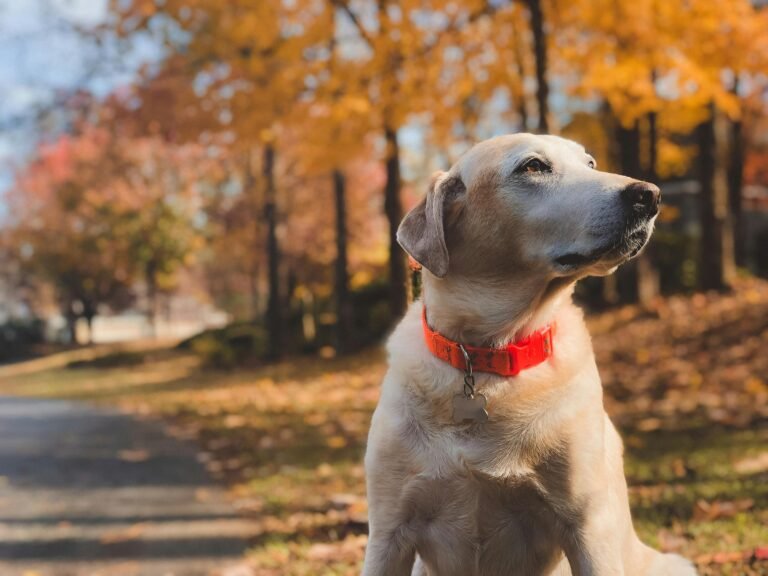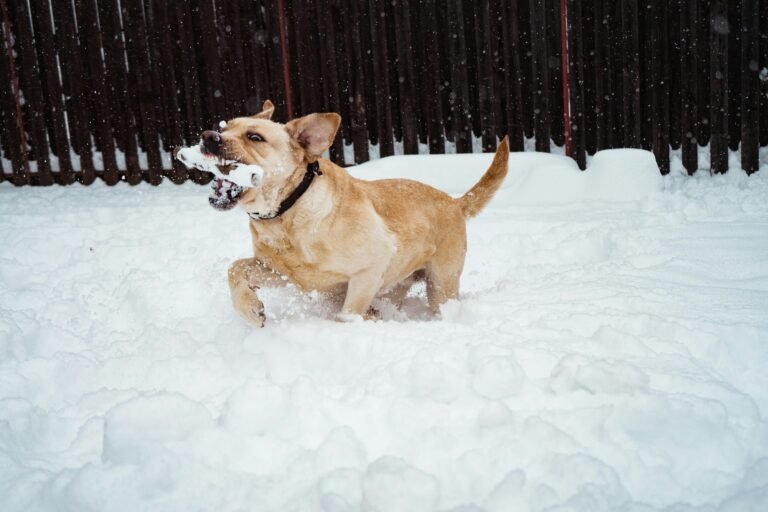Introduction
When the leaves turn golden and the air grows crisp, many dog owners assume that tick and flea season is finally over. Unfortunately, that’s not the case. While summer is peak time for parasites, fall can be just as dangerous for your furry friend. Ticks remain active until temperatures consistently drop below freezing, and fleas can thrive indoors all year long. For dogs, this means autumn adventures in the park or backyard can still bring serious risks of bites, skin irritation, and even disease. In this guide, we’ll break down why fall is still risky, which parasites to watch for, symptoms to monitor, and how to protect your dog during the autumn season.
Why Parasites Thrive in Fall
Ticks and fleas are resilient creatures that don’t simply disappear when summer ends. In fact, fall can be a high-risk period for several reasons:
- Cooler Weather: Moderate temperatures in the 50–70°F range are ideal for tick activity. These conditions encourage ticks to seek out warm hosts like dogs.
- Leaf Litter and Moisture: Fallen leaves create damp, shaded environments that protect ticks and fleas from direct sunlight and desiccation.
- Extended Outdoor Time: Fall is a favorite season for hiking, camping, and backyard play — giving dogs more opportunities to encounter parasites.
- Wildlife Movement: Deer, squirrels, and rodents, which are common carriers of ticks and fleas, are more active during fall as they prepare for winter.
Types of Parasites Active in Fall
Understanding the specific threats helps dog owners stay vigilant:
- Deer Ticks (Blacklegged Ticks): Active well into fall, they are primary carriers of Lyme disease.
- American Dog Ticks: Can transmit Rocky Mountain spotted fever and tularemia.
- Fleas: Thrive outdoors in leaf litter but also infest indoor environments year-round if not controlled.
- Brown Dog Ticks: Adapt well to indoor living, making them a persistent problem even in cooler months.
Diseases Spread by Ticks and Fleas
The bite of a tick or flea isn’t just an irritation — it can lead to serious illness:
- Lyme Disease: Caused by deer ticks; symptoms include lameness, swollen joints, fever, and fatigue.
- Ehrlichiosis: Leads to fever, lethargy, and bleeding disorders.
- Anaplasmosis: Causes fever, loss of appetite, and joint pain.
- Rocky Mountain Spotted Fever: Transmitted by dog ticks; symptoms include vomiting, joint pain, and neurological issues.
- Bartonella (Cat Scratch Fever): Fleas can spread this infection, which sometimes affects dogs as well as cats.
- Tapeworms: Dogs can become infected after swallowing fleas carrying tapeworm larvae.
Signs Your Dog May Have Ticks or Fleas
Parasites aren’t always visible, but your dog’s behavior and health can provide clues:
- Excessive scratching, biting, or licking
- Red, inflamed, or scabby skin
- Visible fleas, flea dirt (tiny black specks), or ticks attached to the skin
- Hair loss in patches, especially near the base of the tail (common with flea infestations)
- Lethargy, fever, or joint stiffness (possible tick-borne illness)
- Unexplained weight loss or tapeworm segments in stool (linked to fleas)
Preventing Tick and Flea Infestations in Fall
The best approach is prevention. Protect your dog with a combination of these strategies:
- Preventive Medications: Use monthly oral or topical flea and tick preventives recommended by your veterinarian. Even in cooler months, these treatments are vital.
- Regular Grooming: Brush and check your dog’s coat daily after outdoor activities, focusing on ears, armpits, belly, and between toes.
- Yard Maintenance: Rake leaves promptly, trim tall grass, and reduce brush piles to eliminate tick-friendly habitats.
- Tick Checks After Walks: Run your hands along your dog’s body to feel for small bumps or attached ticks after outdoor play or hikes.
- Bathing: Use flea and tick shampoos occasionally to kill surface parasites before they spread.
- Limit Wildlife Exposure: Avoid letting dogs roam in wooded areas or tall grasses where ticks thrive, especially in autumn.
What to Do If You Find a Tick
Ticks should be removed promptly and carefully to minimize the risk of disease transmission:
- Use fine-tipped tweezers to grasp the tick close to the skin.
- Pull upward steadily without twisting or jerking to avoid leaving mouthparts embedded.
- Clean the bite area with antiseptic after removal.
- Dispose of the tick in alcohol or flush it down the toilet — never crush with bare fingers.
- Monitor your dog for illness symptoms in the weeks following removal.
Indoor Flea Control During Fall
Even if outdoor activity decreases, fleas can infest your home through eggs and larvae brought in by your dog:
- Vacuum carpets, rugs, and furniture regularly to remove flea eggs.
- Wash your dog’s bedding weekly in hot water.
- Use flea preventives consistently year-round.
- If infestation occurs, consult your vet about safe flea control sprays or professional pest treatments.
Natural and Holistic Approaches
Some owners prefer natural options alongside conventional treatments:
- Essential oil sprays made with diluted cedarwood or lavender (never apply undiluted oils directly to pets).
- Apple cider vinegar in rinse solutions to make coats less appealing to fleas.
- Herbal flea collars with natural repellents like citronella or eucalyptus.
While these may provide additional protection, they should be used with caution and never as a substitute for vet-approved preventives.
Special Considerations in Fall Travel
Autumn is a popular season for camping and hiking trips with dogs. When traveling, remember:
- Pack preventives and tick removal tools in your dog’s travel kit.
- Check for regional risks — some areas have higher rates of Lyme disease or Rocky Mountain spotted fever.
- Keep dogs leashed to reduce exposure to dense brush and tall grass.
Conclusion
While fall brings cooler weather and outdoor beauty, it doesn’t mean a break from tick and flea risks. These parasites remain active well into the autumn months and can cause serious health issues for your dog if left unchecked. With consistent preventives, regular grooming, and proactive care, you can protect your pup and enjoy the season worry-free. By staying vigilant and prepared, you’ll ensure that autumn adventures are safe, fun, and parasite-free for both you and your four-legged companion.





